How the superheroes at Ocala Water Resources battle dastardly forces daily to keep our water safe and pure.
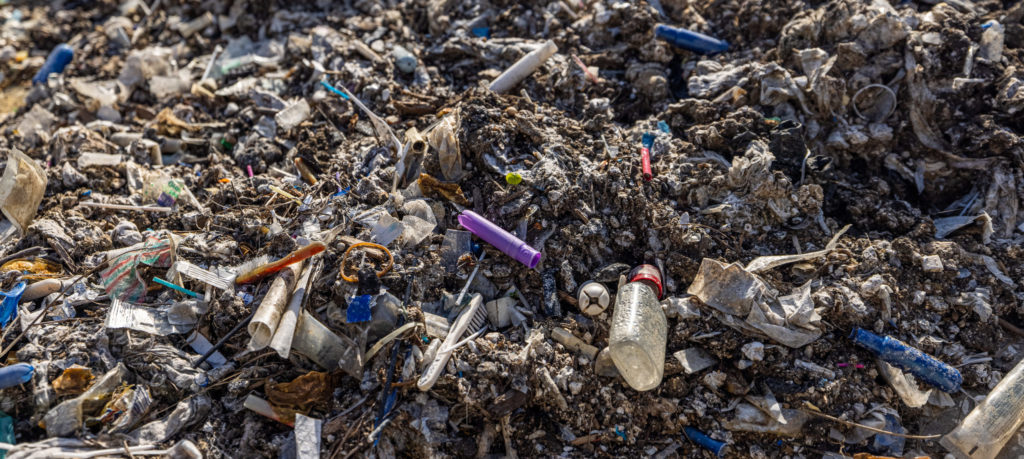 On October 31, while icing down the drinks for a Halloween party, filling up a tub to bob for apples, or washing away the zombie makeup from your adorable trick-or-treater, you probably won’t give a second thought about where the water comes from and where it goes.
On October 31, while icing down the drinks for a Halloween party, filling up a tub to bob for apples, or washing away the zombie makeup from your adorable trick-or-treater, you probably won’t give a second thought about where the water comes from and where it goes.
You may not, but you should.
The water that so many Ocalans take for granted day in and day out doesn’t happen by magic. It just seems that way thanks to Mother Nature and some hardworking, highly skilled fellow citizens.
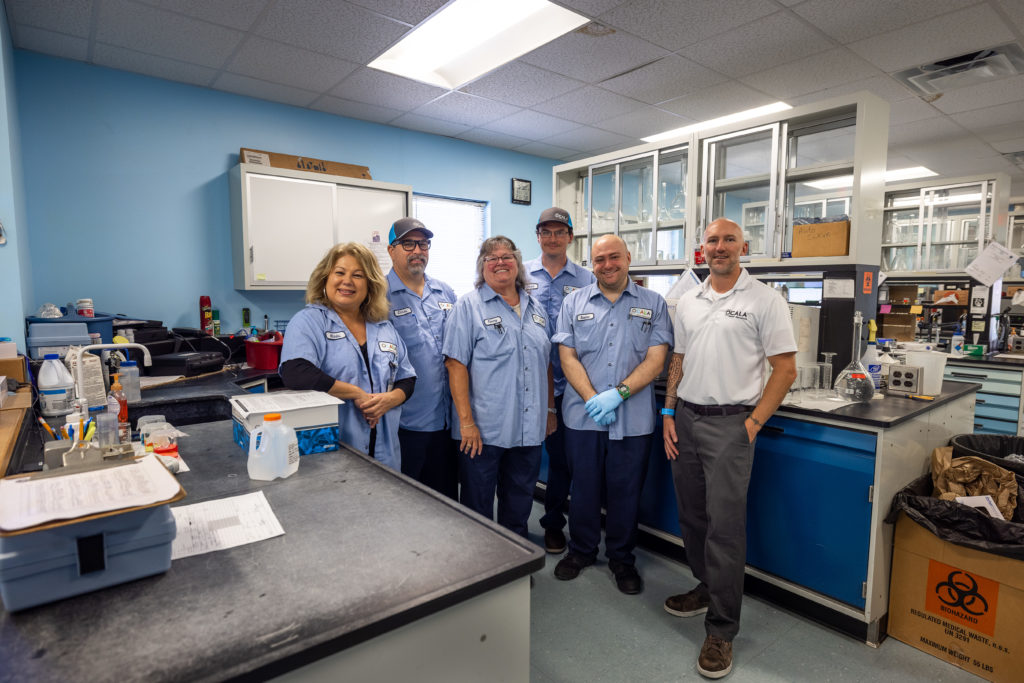 Behind that “magic” is one of the world’s most abundant sources of fresh water—the Upper Floridan Aquifer—as well as the city’s award-winning water services, which ensures a constant supply of pure, clean drinking water to more than 50,000 residences and businesses 24 hours a day seven days a week every day of the year.
Behind that “magic” is one of the world’s most abundant sources of fresh water—the Upper Floridan Aquifer—as well as the city’s award-winning water services, which ensures a constant supply of pure, clean drinking water to more than 50,000 residences and businesses 24 hours a day seven days a week every day of the year.
But making sure that water flows uninterrupted into Ocala’s homes and businesses is only part of the story. It is important to make sure that the water we spray, wash and flush away gets captured, treated and returned to nature as clean and as environmentally safe as possible.
Ocala Water Resources does all that—the pumping, treatment, storage and transfer of drinking water and the collection, treatment and disposal of sanitary sewage—with incredible efficiency.
The tale of how that happens, like any great Halloween story, pits some pretty nasty villains and monsters against some true superheroes.
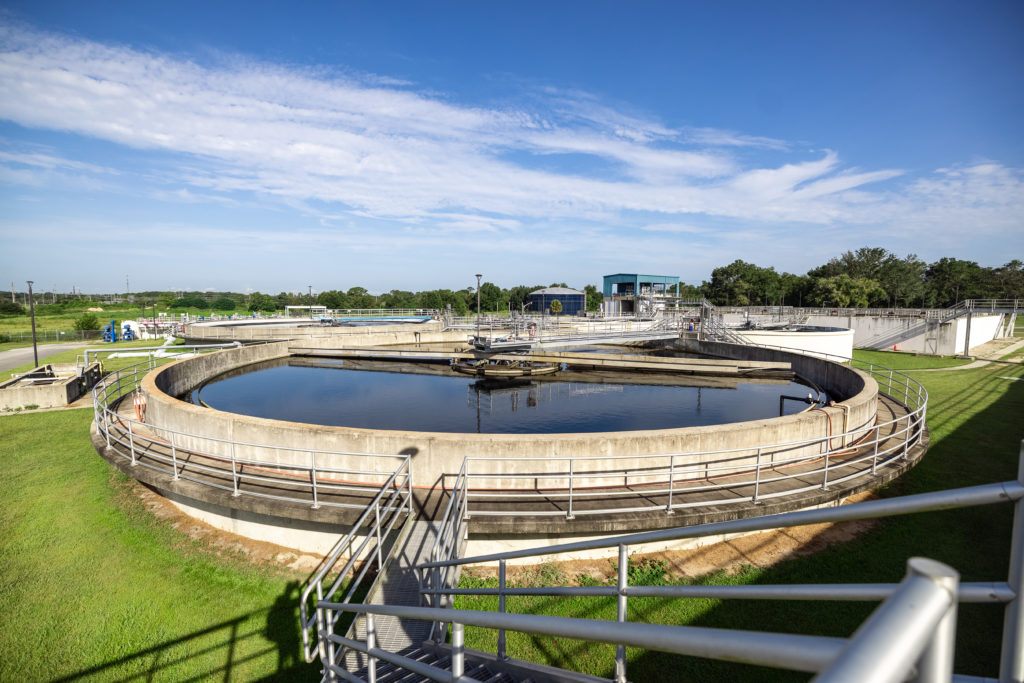 The treat: The water you drink and use
The treat: The water you drink and use
The water that comes out of your faucets for drinking, cooking, bathing, cleaning and keeping your plants hydrated starts deep underground in the Floridan Aquifer—100,000 square miles of water-saturated porous rock that runs deep in the earth from southern Alabama and Georgia and all the way through Florida. The Floridan Aquifer also supplies major cities like Savannah, Jacksonville, Tallahassee, Orlando and St. Petersburg, as well as hundreds of smaller communities and rural areas throughout the region.
In Ocala, five powerful wells continuously pump water from the aquifer at a rate that can yield 12 million or more gallons each day. But before all that can be distributed to Ocala communities as award-winning, high-quality drinking water, highly trained, licensed operators monitor its treatment 24 hours a day and test it at least every two hours to ensure that it meets or beats all drinking water standards.
The tricky part: The water you want to go away
If you think of the high-quality water we use in our daily lives as a treat, the tricky part comes after we’ve used it and emptied it down our sinks or flushed it down our toilets. For most people, from then on, it’s a matter of out of sight, out of mind.
But for the Water Resources team members, that certainly isn’t the case. They work day and night to make sure every drop of water that leaves Ocala’s homes and businesses—with all kinds of other stuff swirling around in it—moves swiftly underground to one of two water reclamation facilities. Once there, it’s treated, sanitized and put to other uses in environmentally safe and sound ways.
That journey to reclamation isn’t always easy or pretty, according to Rachel Slocumb, Conservation Coordinator. “Gravity is the most efficient way to move wastewater,” she explains, “but Ocala is on a fairly level plane, so our pipes are installed at a slight downward angle. But you can only go down so far before you have to go back up again.”
That’s when Water Resources gives gravity a helping hand by regularly raising the water from a lower elevation to higher one at the 135 lift stations located throughout the city.
Heavy lifting
It’s at the lift stations that things can, and often do, can get a little scary, hairy and worse. There, the wastewater goes through bar filters that separate out anything solid that would obstruct the flow of water upward through the pipes—generally things people shouldn’t have flushed down their toilets in the first place.
Shane Bailey, System Maintenance Supervisor, who oversees the lift station crews, says, “I don’t even know how some of the things we find ever make it down people’s toilets.”
Workers have found socks, shoes, shirts, towels, beer bottles, hypodermic needles, money, jewelry and the list goes on.
“We’ve even found bicycle parts and once I pulled out 100 feet of rope,” Bailey adds.
Other flushed items that can cause major clogs or even completely shut down a lift station include disposable diapers, hygiene products, paper towels and even facial tissues. During the pandemic, the crews have also seen an uptick in so-called disposable wipes for sanitizing hands and surfaces. “They may say flushable on the label,” Slocumb adds, “but they’re not.”
One of the more memorable finds happened when maintenance workers discovered a series of plastic McDonald’s Happy Meal figures trapped in a filter. The workers collected, sanitized and then displayed the toys along a ledge in their office, sort of like trophies for the team.
Cute as the toys might be, there’s nothing amusing about a blocked or malfunctioning lift station. Bailey and his crew have to do the hard labor required to clean up the mess or repair damage caused by others’ carelessness or lack of good information
“Our job is to keep all of our pipe systems, lift stations, fire hydrants and treatment plants operating at maximum efficiency and to comply with all the regulations,” Bailey says. “The citizens of Ocala may not know who we are or what we do, but they would notice if we didn’t do it.”
 Scary stuff. FOG alert. Fatberg ahead.
Scary stuff. FOG alert. Fatberg ahead.
Like a Halloween goblin, FOG—fats, oils and grease—can cause major mayhem not just in water reclamation but also in people’s private homes and businesses. When these substances go down the drain, they collect along the walls of pipes and eventually restrict or completely choke the flow, which results in a backup that, at best, just causes a stinky mess, at worst costly repairs.
Pretty much the same thing happens when FOG stockpiles in the water collection system and lift stations, causing odors, overflows and extra work for the maintenance crews.
When FOG encounters those troublesome unflushable items, they can create a fatberg, a congealed mass that aggressively clogs everything from household pipes to lift stations to water reclamation facilities. Water Resources crews are called on multiple times each week to pump out or manually unclog Ocala’s multiple lift stations.
So what can you do to prevent FOG from putting a pinch on your pocketbook and a damper on your party? For starters, remember that FOG isn’t limited to bacon grease or the oil from a fried chicken dinner. It can also include high-fat culprits such as butter, cheese, peanut butter, sour cream, gravy, mayonnaise, salad dressings or the liquids from the bottom of your crockpot.
None of those should go into the kitchen sink. It’s also a good idea to wipe off plates and utensils with a paper towel before washing, collect your FOG in disposable containers and think twice about what you put down your garbage disposal. Slocumb calls the disposal units a “gateway to bad decisions” about what goes down.
Helping local businesses do their part
Although residential wastewater presents the bulk of Water Resources’ challenges, Compliance Monitoring team members also make sure local businesses meet federal and state water standards.
Bill Crigar, Compliance Monitoring Supervisor and a department veteran, says, “We monitor compliance to make sure businesses are doing what they’re supposed to, but a lot of what we do is to educate them about the requirements.” He says the vast majority of Ocala’s industrial and manufacturing operations take protecting the City’s water seriously.
FOG and fatbergs are a particular issue in local restaurants, according to the compliance department’s Leslie Cook, Compliance Monitoring Technician III.
“Basically, we monitor grease trap maintenance, making sure the grease interceptors are well maintained and functioning properly to prevent fats, oils and grease getting into wastewater and clogging up the system.”
It can be devastating when they do. Crigar recalls an incident when a local restaurant’s grease trap backed up, spilling out into the parking lot on Mother’s Day and creating a gooey, slippery mess for patrons.
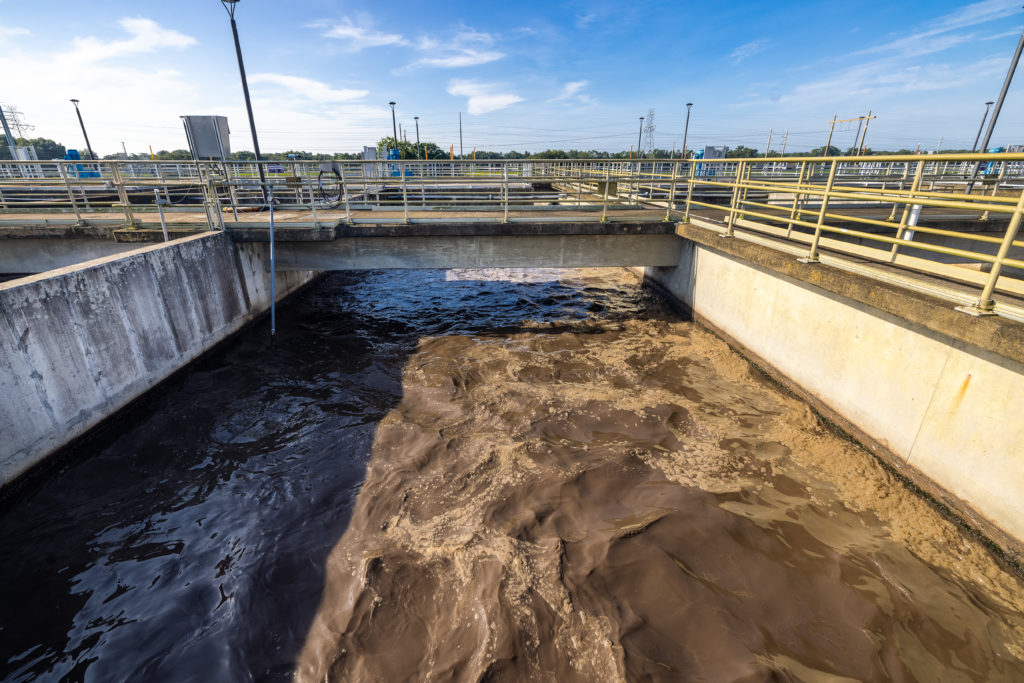 Reclaiming wastewater
Reclaiming wastewater
So where does all that wastewater finally come to rest? In reality, it doesn’t. Eventually, it becomes part of a continuous cycle focused on protecting the environment and ensuring a plentiful supply of fresh water for generations to come.
Once all the wastewater from Ocala’s homes and businesses is collected and transported to one of the two water reclamation facilities, it goes through some interesting biological and chemical processes to make it safe to reuse for other purposes.
Bill Davis, Lead Operator at one of the reclamation sites, says, “We pay particular attention to the levels of nitrates and phosphates in wastewater to keep our levels below the acceptable standard set by Florida’s Department of Environmental Protection.”
To remove those substances, which can threaten the local environment, including Silver Springs, Davis and his colleague Jeff Greve, Lead Operator, employ a vast army of helpful microbes to break down the organic material, remove the nitrates and help prepare the remaining water for reuse.
“We’re like zoologists,” says Greve, “creating and maintaining an environment where the microbes can thrive and do their job.”
At the end of the treatment process, the water is filtered to remove any residual solids, which can be used as fertilizer. The resulting water is eventually restored to the same level of purity as drinking water, making it ideal for irrigating farms, city parks, golf courses, residential and commercial properties, as well as the Ocala Wetland Recharge Park.
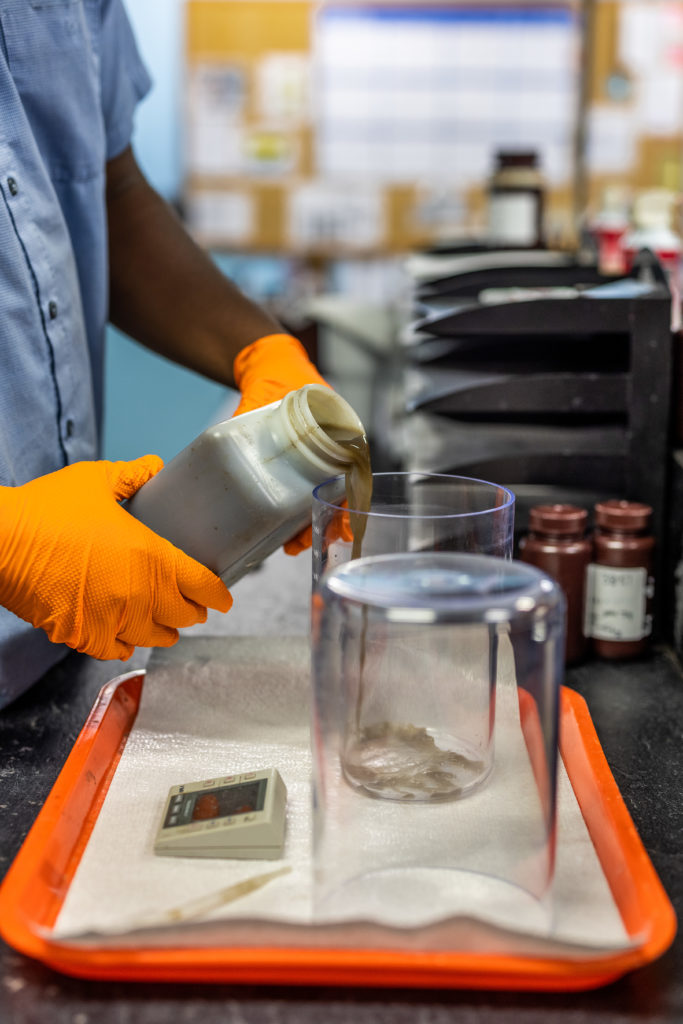 A great place to start a career
A great place to start a career
“I didn’t graduate from high school thinking, ‘Hey I want to be a wastewater facility operator,’” Greve shares. “But my mother, who worked in the Water Resources payroll department, asked if I’d be interested. I went on a couple of tours and could see myself working here. I took a short correspondence course, worked a set number of hours in a facility, took a 100-question exam and was on my way. I’ve advanced continually from there and now I’m licensed as Wastewater Treatment Plant Operator Class A.”
Greve says one of the best things about working at Water Resources is there is something for almost anyone, whatever your interests, whether that be computers, biology, chemistry or working with your hands on machines and equipment.
“You can start your career here just out of high school, get some training and experience, earn a license and get set for a great career that can take you virtually anywhere in the state and beyond,” Slocumb offers.
If you’re interested in learning more about Water Resources, taking a tour, or applying for an internship or job, call (352) 351-6772 or visit www.ocalafl.org and click on the Water Resources link under the Government tab.
Toilet vs. Trashcan
Rachel Slocumb says people should remember the three Ps before they flush anything down the toilet. If it isn’t pee, poop, or toilet paper, dispose of it elsewhere. Her checklist of items never to flush includes:Wipes of all kinds
Facial tissue
Paper towels
First-aid supplies
Latex gloves
Dental floss
Cotton swabs
Hair
Diapers
Food remnants
Slime
Feminine hygiene products
Toys
Contraceptives
Product packaging
Cat litter
Toothpaste tubes
Contact lenses
Washcloths
Towels






